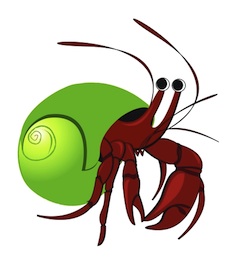While most will choose more traditional animals like cats or dogs, there’s a chance that their tastes will run a bit more towards the exotic.
In some cases, some smaller pets may even seem like a better choice to parents who aren’t aware of the drawbacks that some common choices bring to the table.
These 10 pets are among those that you won’t want to adopt if you’re planning to have children in the near future, or if you already have little ones in the house.
- Primates – Fictional characters may have their beloved primate sidekicks, but that doesn’t mean that monkeys are a great choice for real-life families. In addition to being temperamental enough to cause very serious injury if provoked, keeping certain primates is illegal in some states. There are also ethical issues to consider, as many primates that end up on the pet market were taken from their natural habitat as babies specifically for sale as pets. Furthermore, certain types of primates can harbor herpes B, a disease that’s potentially fatal to humans, and one that doesn’t reliably show up during veterinary testing.
- Turtles – The hard shell of a turtle seems to indicate sturdiness and their slow pace can easily be mistaken for patience. In fact, some varieties of turtle can be very temperamental. Turtles commonly carry salmonella bacteria as well, which may make them unsafe for children that aren’t vigilant about washing their hands properly after handling them.
- Hedgehogs – Cartoon characters like Sonic make hedgehogs seem like ideal pets, but this isn’t always the case. Hedgehogs are considered exotic pets and do require very specific environmental conditions to thrive. Not to mention the fact that their quills are sharp!
- Ferrets – Small and fun to watch, ferrets can seem like the ideal choice for kids. They’re actually quite prone to anxiety, however, and can lash out when they’re threatened, making them dangerous for small children to hold. They also produce a musky smell that’s difficult to mask, which could be a deal-breaker for adults in the house.
- Hamsters – When most parents think of small, furry animals that would make a great starter pet, hamsters are at the top of the list. What you may not realize, however, is that they may be quite disappointing for the kids they’re meant to entertain. Hamsters are naturally nocturnal, meaning that they will be sleeping while kids want to interact with them. Keeping a hamster in your child’s room is also likely to affect his sleep schedule, as a hamster becomes active enough at night to make noises that could wake your child.
- Snakes – It’s not difficult to convince most parents that snakes are a less than ideal choice for a family pet, but there are those that allow themselves to be swayed. Their feeding habits can be traumatic to small children, as they typically consume rats and other small rodents whole, and they can become much larger than anticipated. In such cases, families are left with a snake they cannot properly care for and may have difficulty finding a serpent-friendly family to take over responsibility for it.
- Big Cats – Most parents wouldn’t dream of introducing a tiger, leopard or panther to their household, but keeping big cats as pets isn’t unheard of. In fact, there are more tigers in private ownership now than thriving in the wild. Even if they’re raised from tiny cubs, big cats are still essentially wild animals and will behave as such, which can have deadly consequences.
- Kinkajous – These members of the raccoon family gained a small measure of popularity as an exotic pet when celebrity heiress Paris Hilton began appearing on the red carpet with one of her very own. They can be dangerous, biting and scratching when they’re stressed, and can also carry Kingella potus bacteria, which can cause high fevers, severe headaches and stomach pains in humans.
- Iguanas – The Centers for Disease Control and Prevention estimates that as many as 93,000 people contract salmonella each year through exposure to reptiles, which up to 90% of iguanas have. Their claws are extremely sharp, and adults can weigh as much as 30 pounds. Bites from iguanas are fairly common, and can be very serious. They absolutely should not be kept in a house with small children.
- Hermit Crabs – Many pet stores and even novelty beach-side gift shops sell hermit crabs in brightly colored shells that can be tempting to small children. While they’re small, their pincers can be quite painful if they latch on properly. Furthermore, they cannot be handled or moved during their molting period, which lasts for roughly one week and can happen as often as once each month. Moving a molting crab will almost invariably kill it, giving small kids an early lesson about the life cycle.
While these pets are not likely to be the best choices for households with small children, it’s important to keep in mind that even trusted furry friends can be questionable. Though the environment in which your dog or cat is raised will have a huge bearing on how it behaves later, you should keep in mind that some breeds have a genetic predisposition to be better suited to life with children than others.
Be sure you do your homework on any animal before you introduce your children to it and bring it into your home as a new member of the family.
Good luck with your family pet hunting and thank you for your time!
CHILDCARE, 10 Pets ‘not’ to adopt if you have little ones!
January 14, 2013 by






